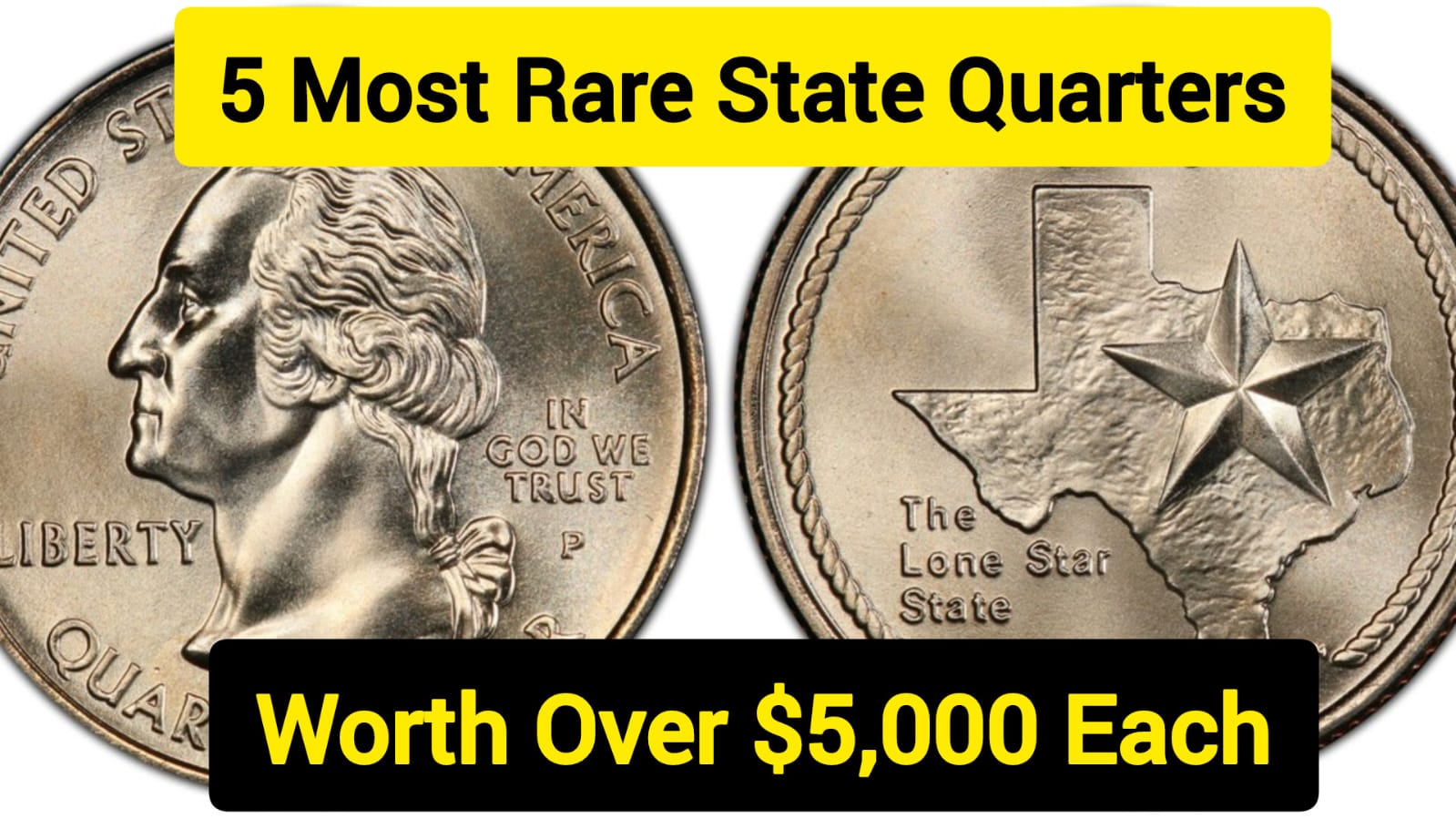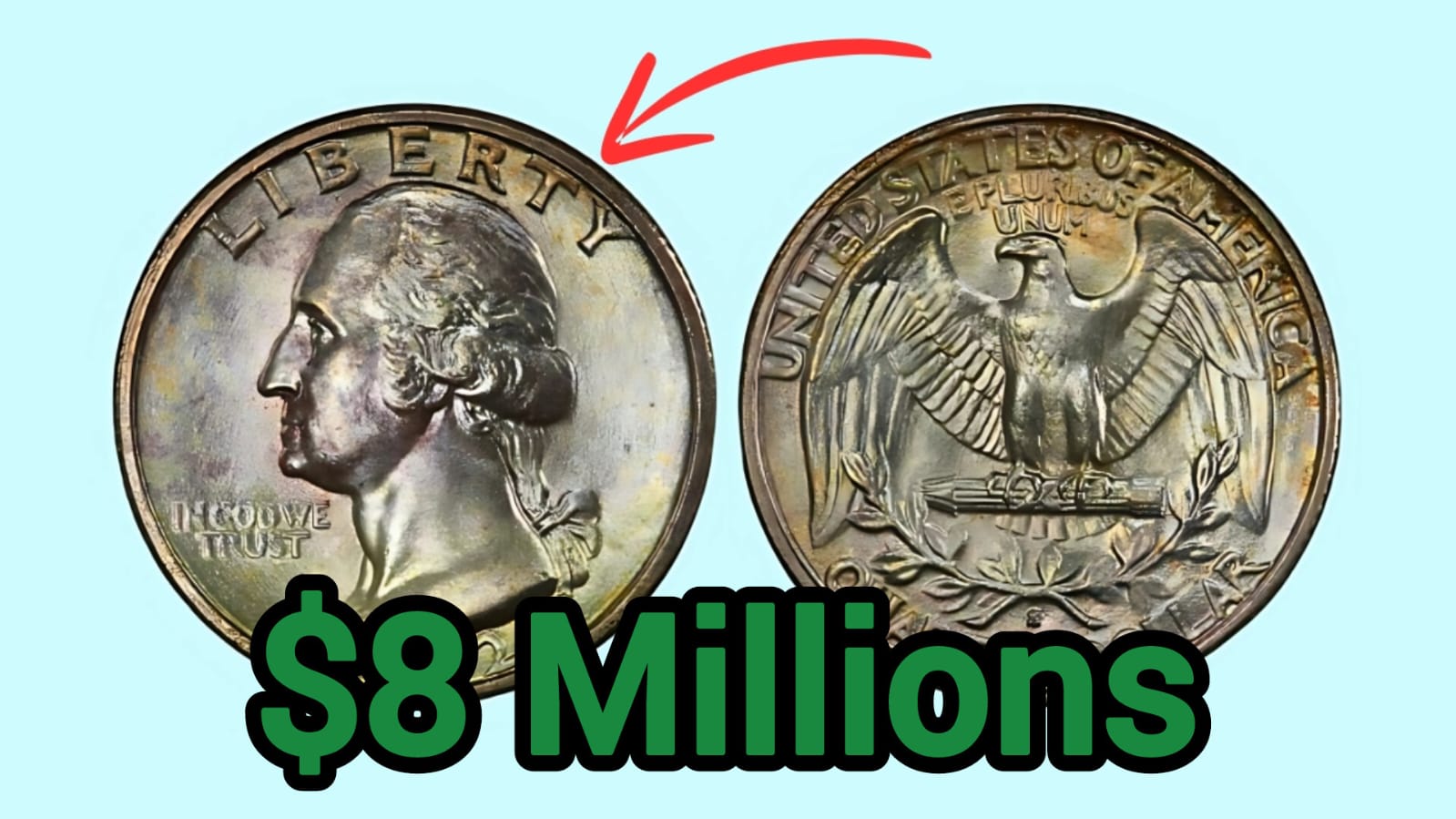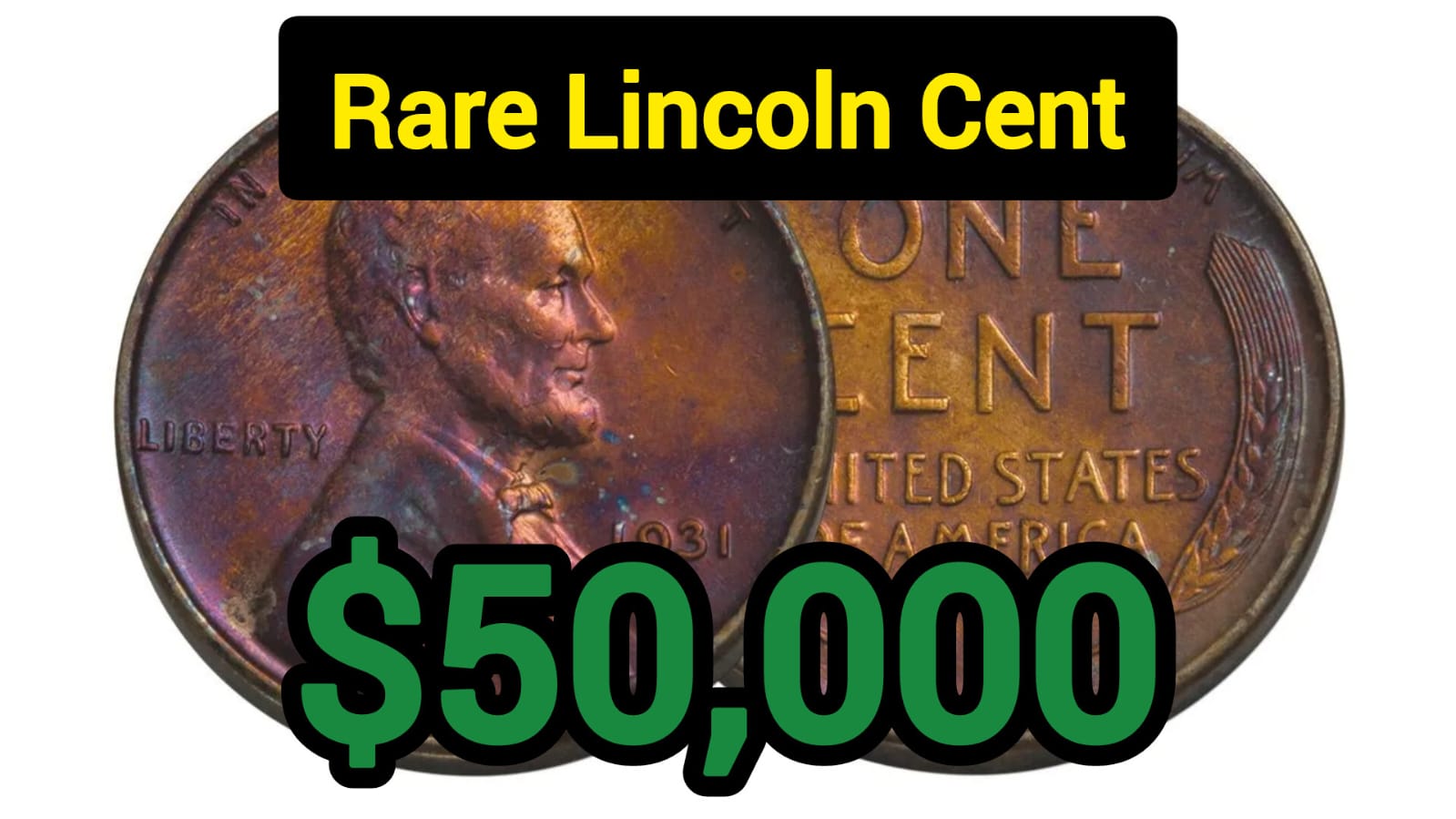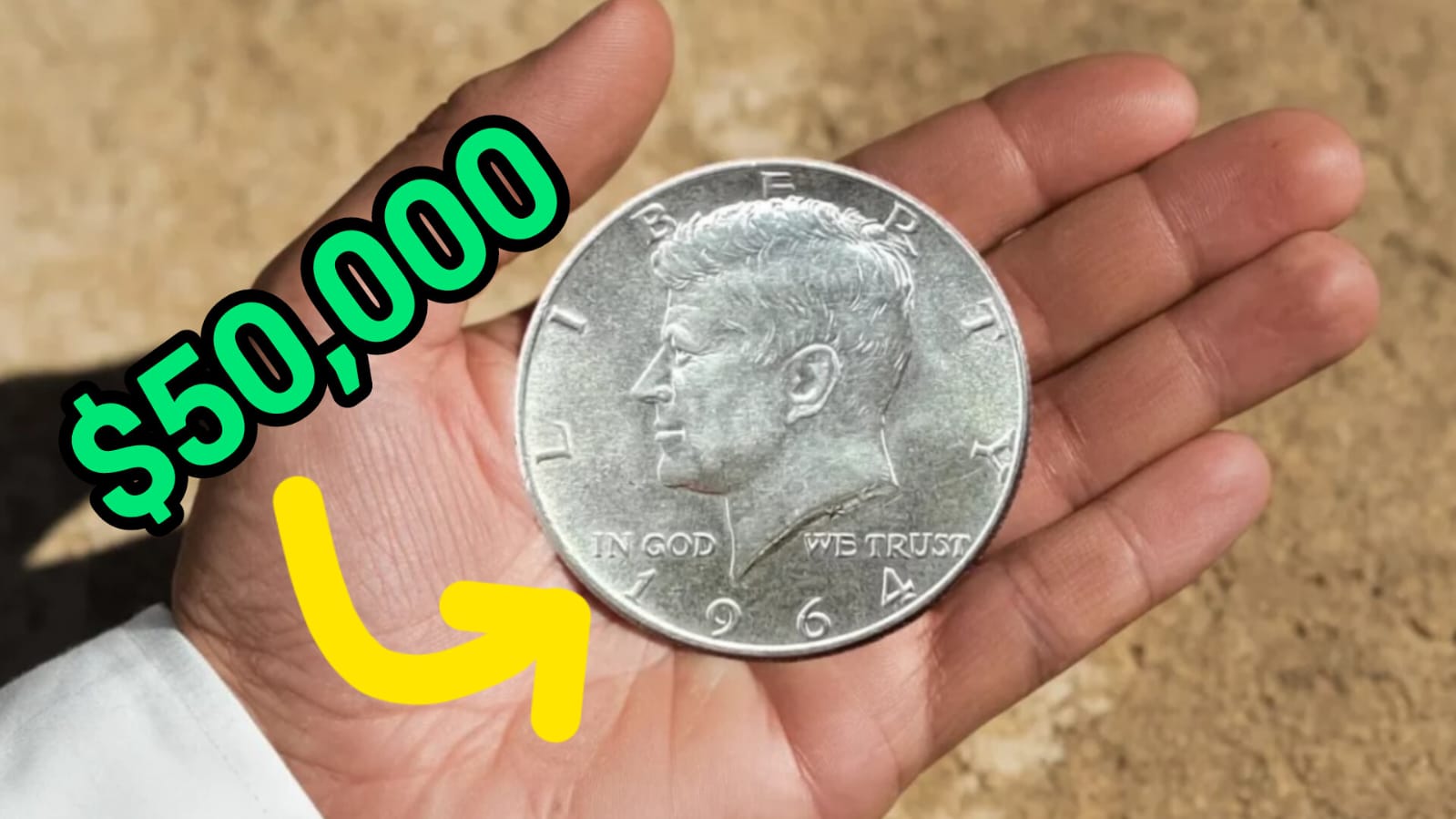Have you ever flipped a quarter into a vending machine without giving it a second glance? That casual toss might have just cost you thousands of dollars! While most state quarters jingle in our pockets with a humble 25-cent value, a select few have become the crown jewels of modern coin collecting, commanding prices that could pay off your car or even make a significant dent in your mortgage.
The State Quarters Program, which ran from 1999 to 2008, produced billions of quarters celebrating each state’s unique heritage and history. Among this sea of coins, a handful of rare specimens emerged due to minting errors, experimental processes, or exceptional quality. What’s truly exciting is that some of these valuable quarters are still circulating today – perhaps hiding in your spare change jar, coin collection, or even passing through your hands in everyday transactions.
In this article, I’ll guide you through the five most valuable state quarters worth over $5,000 each, explain what makes them so special, and help you identify if you might be holding a small fortune in your hand. Let’s dive into the fascinating world of numismatics and discover which quarters are truly worth hunting for.
What Makes State Quarters Valuable?
Before we explore the most valuable specimens, it’s important to understand what transforms an ordinary quarter into a collector’s dream. Unlike ancient coins that derive value from their age, modern rare quarters gain their worth through other factors:
Minting Errors: When Mistakes Become Treasures
Some of the most valuable state quarters owe their worth to mistakes made during the minting process. The 2004 Wisconsin “Extra Leaf” quarter shows what appears to be an additional leaf on the corn stalk due to a die error. These manufacturing mishaps, which would typically be considered defects in other industries, become highly prized rarities in the numismatic world.
Think of it like finding a misprinted Harry Potter book where Hogwarts is spelled “Hogwrats” – what would normally be a publishing disaster becomes a collector’s item precisely because of its uniqueness and scarcity.
Experimental Planchets: Golden Opportunities
In 1999, as the U.S. Mint prepared to launch the Sacagawea dollar coin, they experimented with various metal compositions. Some state quarters were accidentally struck on these experimental golden-colored planchets, creating extremely rare variants that stand out from their silver-colored counterparts.
These golden quarters are like finding a chocolate chip cookie in a batch of sugar cookies – immediately noticeable and distinctly different from what was intended.
Exceptional Grade: Perfection Commands a Premium
Some quarters become valuable not because of errors or unusual compositions, but simply because they’ve been preserved in near-perfect condition. Professional grading services like PCGS (Professional Coin Grading Service) and NGC (Numismatic Guaranty Corporation) rate coins on a scale from 1 to 70, with 70 being perfect. Quarters with grades of MS68 or MS69 (Mint State) can command extraordinary premiums.
The 5 Most Valuable State Quarters Worth Over $5,000
Now, let’s explore the five state quarters that could turn your pocket change into a small fortune:
| Rank | Quarter | Mint Mark | Year | Special Feature | Approximate Value |
|---|---|---|---|---|---|
| 1 | Delaware | P | 1999 | Golden Experimental Planchet | $10,000 |
| 2 | Wisconsin | D | 2004 | Extra Leaf Error (High/Low) | $6,000 |
| 3 | Georgia | P | 1999 | Golden Experimental Planchet | $5,000-$7,000 |
| 4 | South Carolina | P | 2000 | High Grade MS69 | $8,000 |
| 5 | Minnesota | P | 2005 | Extra Tree Error | $3,500-$5,000 |
1. 1999-P Delaware State Quarter (Experimental Planchet)
The Delaware quarter holds a special place in numismatic history as the very first state quarter released. While most are worth only face value, a few were accidentally struck on experimental golden-colored planchets intended for the Sacagawea dollar.
How to Identify It:
- Look for a distinctive golden tint instead of the usual silver color
- The quarter should have the normal Delaware design featuring Caesar Rodney on horseback
- The golden color should be consistent throughout the coin, not just surface discoloration
These golden Delaware quarters can fetch around $10,000 in good condition, making them the most valuable state quarters you might still find in circulation. Imagine finding one of these in a roll of quarters from the bank – it would be like discovering a diamond mixed in with pebbles!
2. 2004-D Wisconsin Extra Leaf Quarter
The Wisconsin quarter error is perhaps the most famous in the entire State Quarters Program. The standard design features a cow, a wheel of cheese, and a corn stalk. However, some quarters from the Denver mint show what appears to be an extra leaf on the corn stalk.
How to Identify It:
- Look for an additional leaf on the left side of the corn stalk
- Two varieties exist: “High Leaf” and “Low Leaf”
- The mint mark should be “D” (for Denver)
These error coins can sell for up to $6,000 in uncirculated condition. The extra leaf wasn’t actually intended to be a leaf at all – it was likely caused by a damaged die, making these quarters a fascinating example of how minting accidents can create valuable treasures.
3. 1999-P Georgia State Quarter (Experimental Planchet)
Similar to the Delaware quarter, some Georgia quarters were also struck on the golden experimental planchets intended for the Sacagawea dollar. The Georgia quarter, featuring a peach and oak sprigs, was the fourth state quarter released in the program.
How to Identify It:
- Look for the same golden tint as the Delaware experimental planchet quarter
- The design should feature the standard Georgia imagery with a peach and oak sprigs
- Check that the golden color is consistent throughout
These golden Georgia quarters can be worth between $5,000 and $7,000 depending on their condition. Finding one would be like discovering that an ordinary-looking painting in your attic was actually painted with gold leaf!
4. 2000-P South Carolina Quarter (High Grade MS69)
Unlike the other quarters on this list, the South Carolina quarter becomes valuable not because of an error or experimental metal, but because of its exceptional condition. Very few South Carolina quarters have achieved the near-perfect grade of MS69.
How to Identify It:
- This is difficult to identify without professional grading
- Look for absolutely pristine surfaces with no visible marks under magnification
- The design features a Carolina wren, a yellow jessamine, and a palmetto tree
These high-grade South Carolina quarters can sell for around $8,000. The challenge with these is that they’re almost impossible to identify without professional grading, as the difference between an MS68 and MS69 coin often comes down to microscopic details.
5. 2005-P Minnesota Quarter (Extra Tree Error)
The Minnesota quarter error shows what appears to be an extra tree in the design. The standard design features a lake with a loon, trees, and the state outline. However, some quarters show doubling in the tree area, creating what looks like an additional tree.
How to Identify It:
- Look for doubling or an extra tree in the wooded area of the design
- The error is the result of die doubling during the minting process
- The mint mark should be “P” (for Philadelphia)
These error quarters can be worth between $3,500 and $5,000 in excellent condition. The extra tree is like finding a photo where someone mysteriously appears twice – it immediately catches your attention because you know something isn’t quite right.
How to Find Valuable State Quarters
Now that you know what to look for, here are some strategies to help you find these valuable quarters:
Check Your Change and Collections
Start by examining any state quarters you already have. Look through old coin jars, inherited collections, and even your everyday change. Pay special attention to the dates and mint marks of any state quarters you find.
Search Coin Rolls
Bank rolls of quarters can sometimes contain overlooked treasures. While the odds of finding extremely rare specimens are low, many collectors have found valuable coins this way.
Attend Estate Sales and Auctions
People often sell old coin collections without realizing their true value. Estate sales, garage sales, and auctions can be gold mines for finding valuable quarters at bargain prices.
Join Coin Collecting Communities
Connect with other collectors through clubs or online forums. These communities often share tips on where to find rare coins and can help authenticate potential discoveries.
Conclusion
The hunt for rare state quarters combines the thrill of treasure hunting with the accessibility of everyday currency. While finding a $5,000+ quarter might be a long shot, the possibility exists every time you receive change from a purchase. These five rare quarters – the 1999-P Delaware and Georgia on experimental golden planchets, the 2004-D Wisconsin Extra Leaf, the 2000-P South Carolina in MS69 condition, and the 2005-P Minnesota Extra Tree – represent some of the most valuable modern coins still potentially in circulation.
As you sort through your coins, remember that knowledge is your most valuable tool. Understanding what makes certain quarters valuable and how to identify them increases your chances of finding a genuine treasure. Even if you don’t discover a multi-thousand-dollar quarter, the journey through American history and numismatics is rewarding in itself. So check those coin jars, roll up your sleeves, and happy hunting!
FAQs About Valuable State Quarters
1. How can I tell if my Wisconsin quarter has the valuable “Extra Leaf” error? Look closely at the corn stalk on the left side of the coin. The error appears as an additional leaf either high or low on the left side of the corn. Genuine errors are part of the strike, not post-mint damage or scratches.
2. Are state quarters still in circulation today? Yes, state quarters are still in circulation and can be found in everyday transactions. While many collectors have removed the rarer specimens from circulation, some valuable error coins may still be out there waiting to be discovered.
3. Should I clean my state quarters before checking if they’re valuable? No! Never clean your coins. Cleaning can significantly reduce a coin’s value, as collectors prefer coins with original surfaces, even if they show some toning or natural wear. A cleaned coin is immediately obvious to experienced collectors and will sell for much less than an uncleaned example.
4. How can I get my potentially valuable state quarter authenticated? For potentially valuable coins, consider professional authentication services like PCGS (Professional Coin Grading Service) or NGC (Numismatic Guaranty Corporation). These services will grade your coin, authenticate it, and encapsulate it in a protective holder, which can significantly increase its marketability.
5. Besides the top 5 listed, are there other valuable state quarters worth looking for? Yes! Other valuable state quarters include the 2008 Alaska “Extra Claw” error, the 2000 New Hampshire quarter in high grades, and various doubled-die errors on other state quarters. While these may not reach the $5,000 threshold, they can still be worth hundreds or even thousands of dollars to collectors.
10 Rare Jefferson Nickels Worth $500 Each – Hidden Treasures in Your Pocket Change
10 Most Rare & Valuable State Quarters Coins Worth 35 Million USD – Still in circulation



